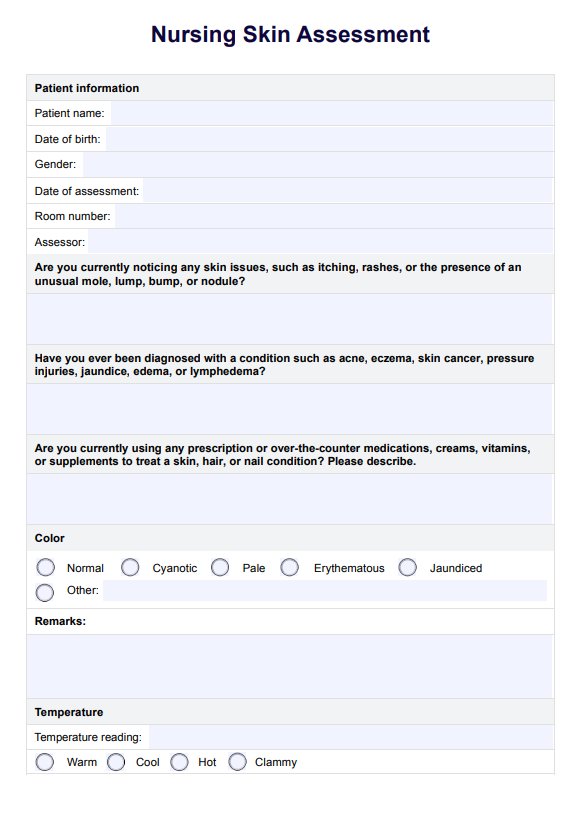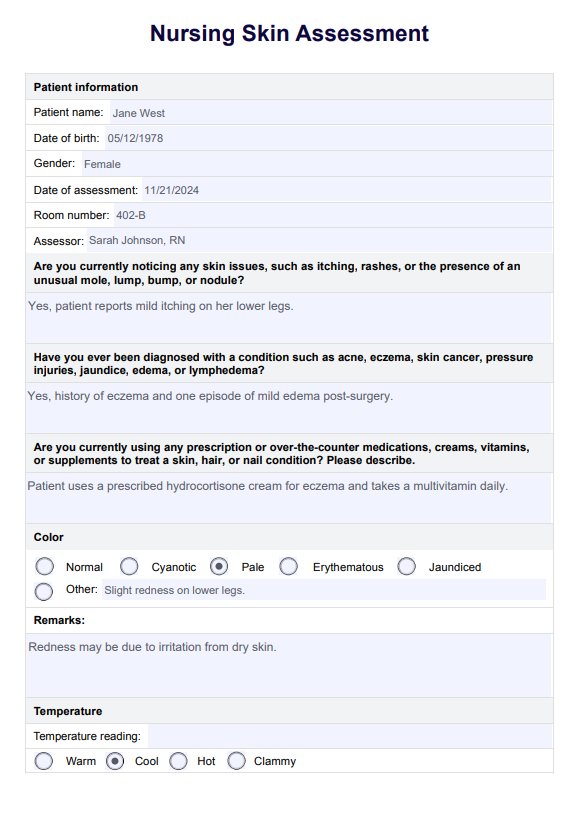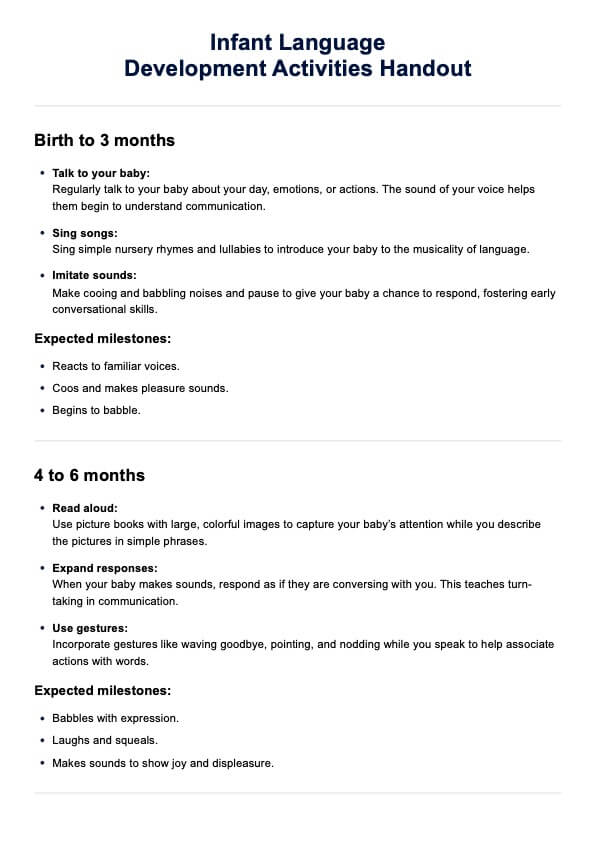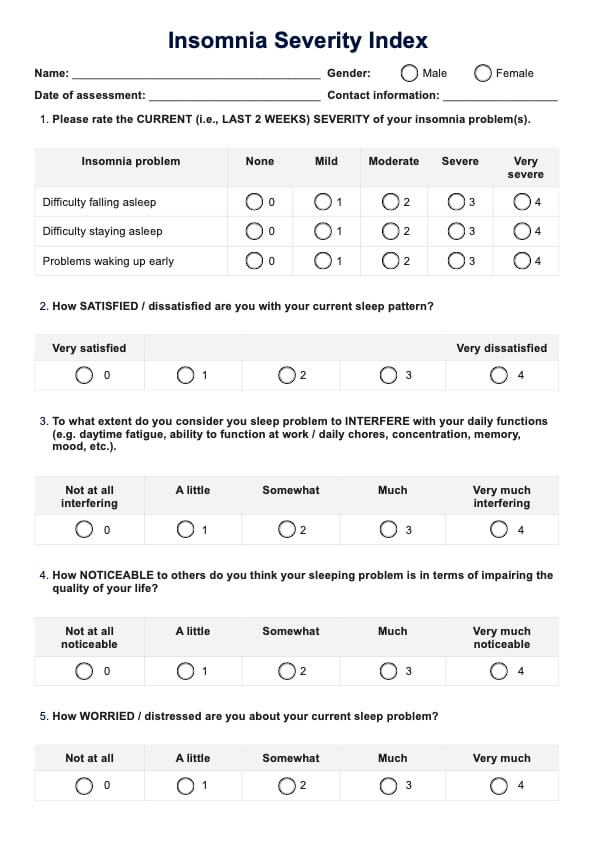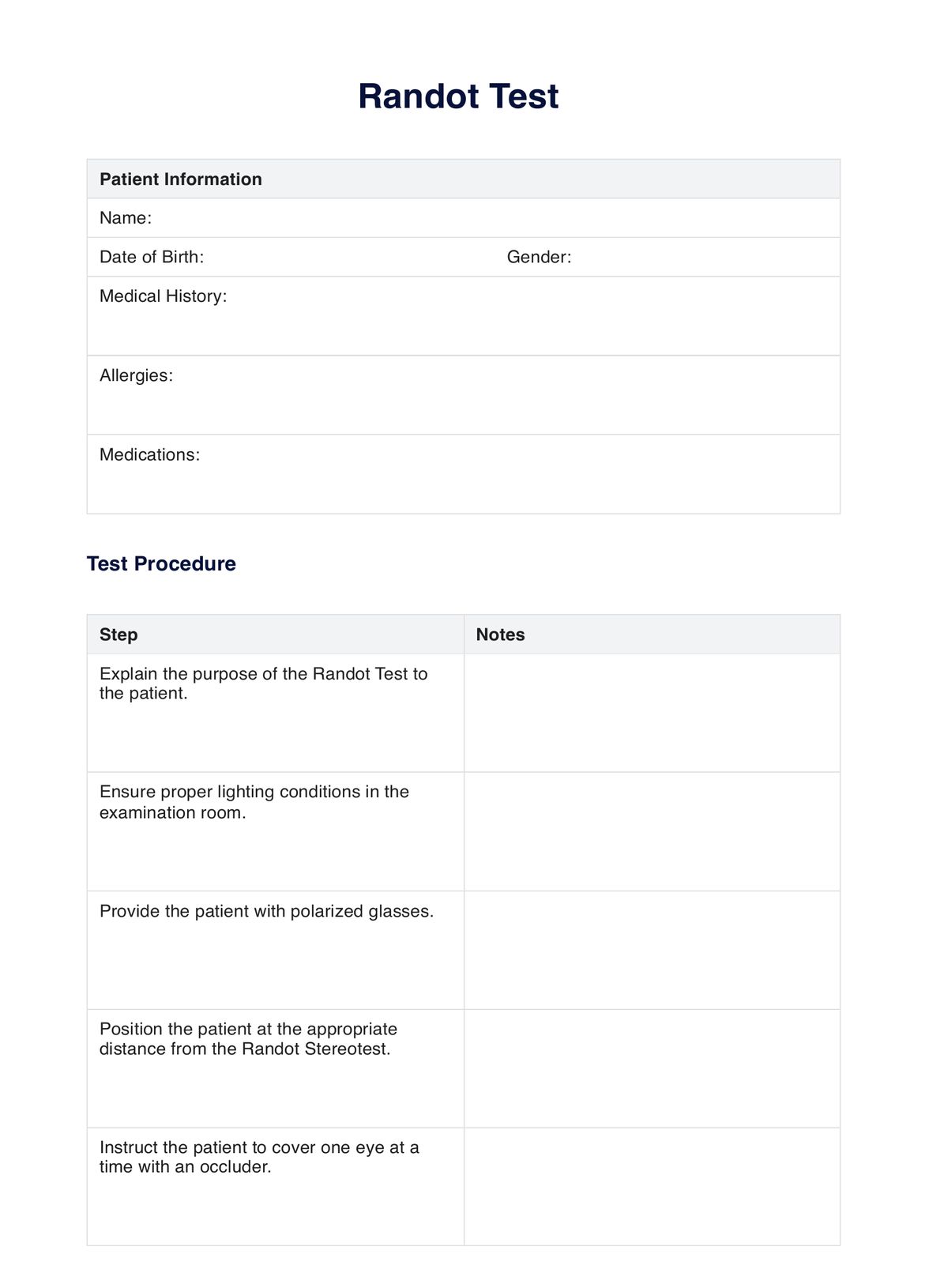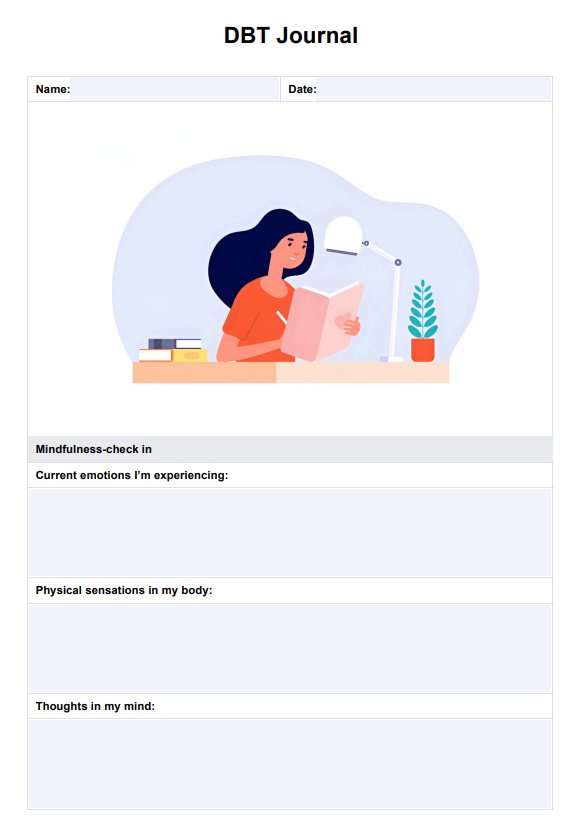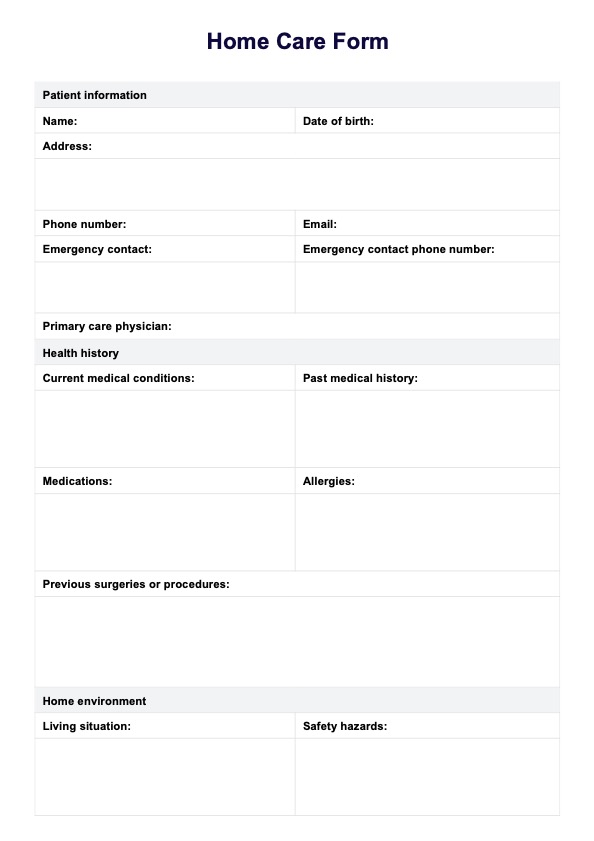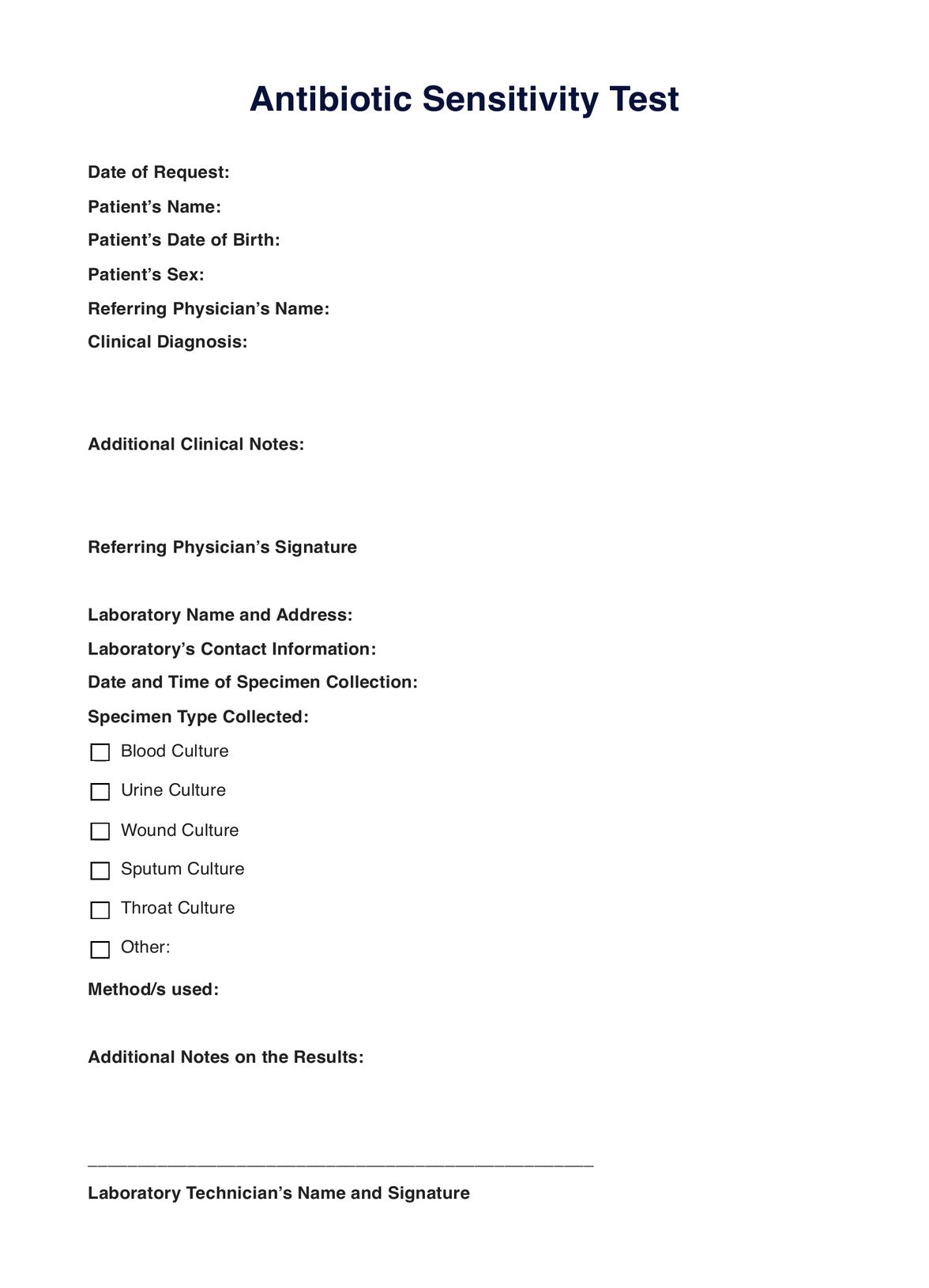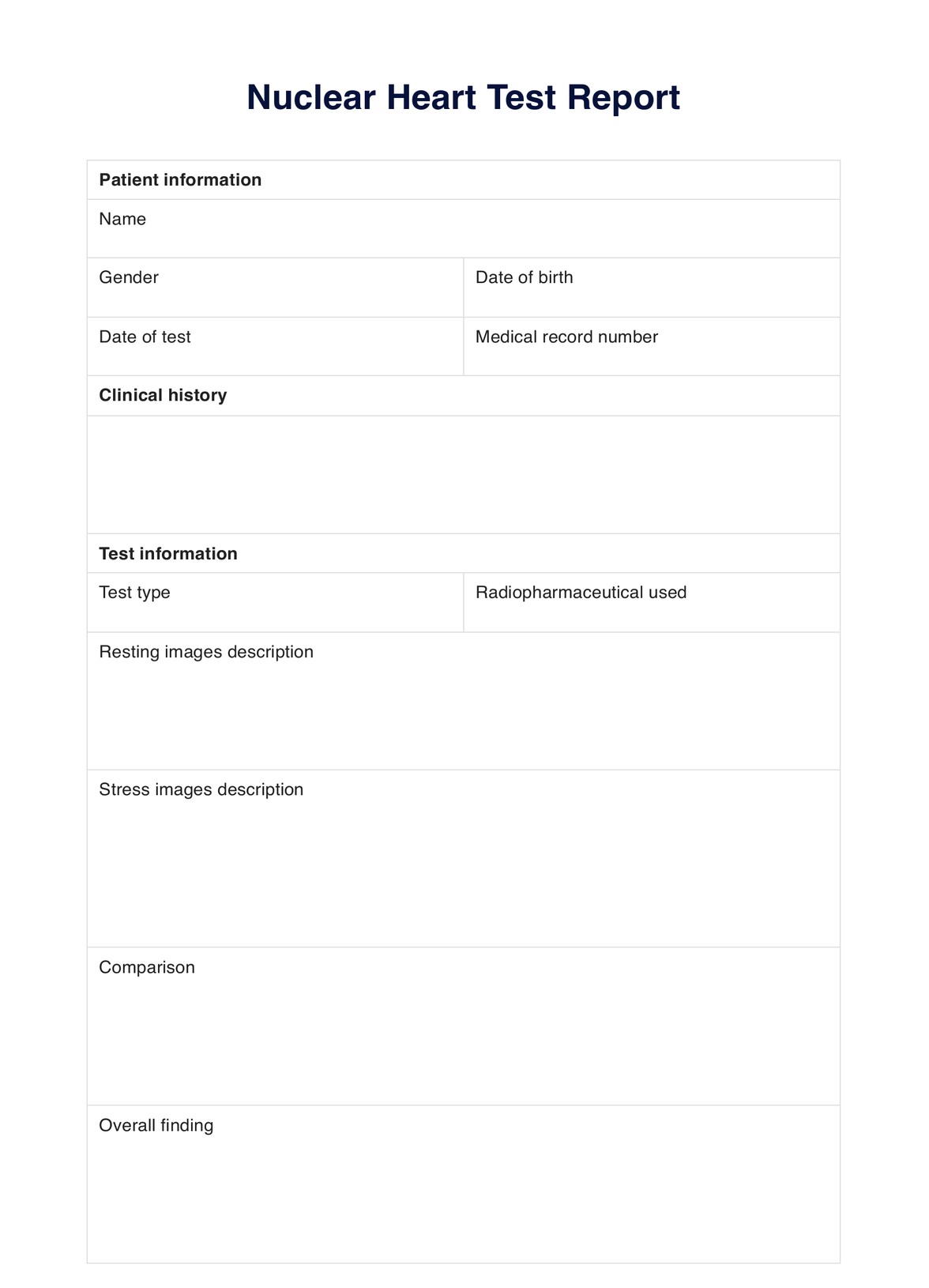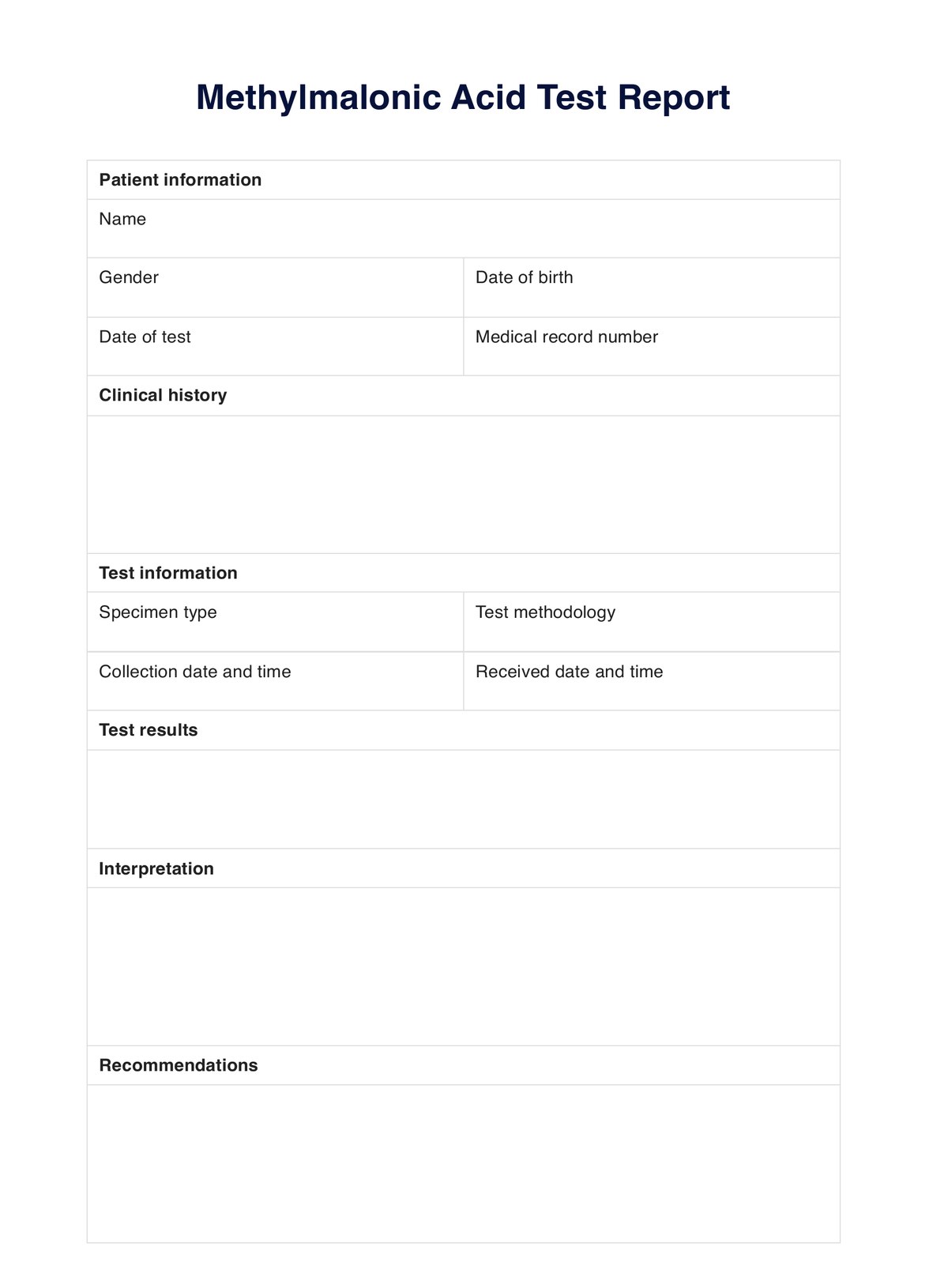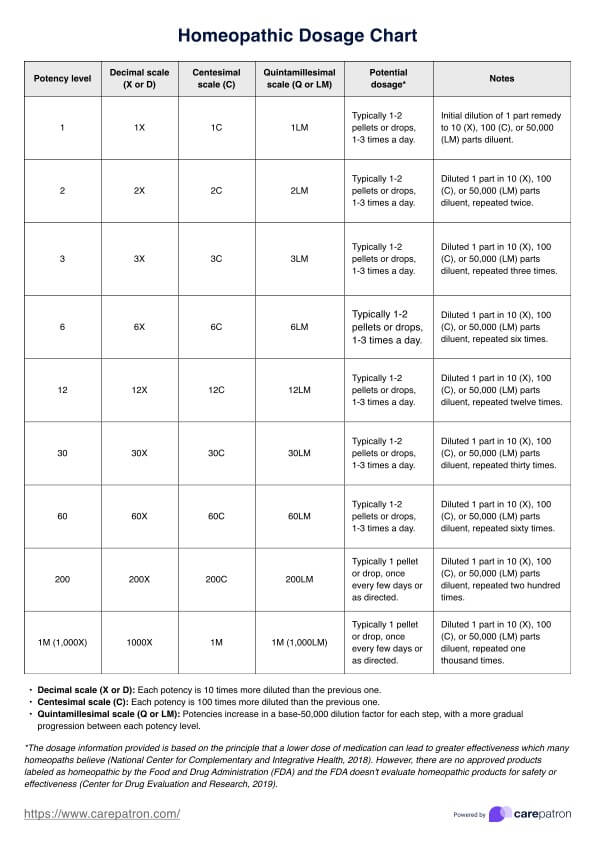Nursing Skin Assessment
Learn the importance of nursing skin assessment, how to conduct it thoroughly, and document your findings with Carepatron's free PDF download.


What is a Nursing Skin Assessment?
A Nursing Skin Assessment is a systematic evaluation of a patient's skin to identify any signs of skin breakdown, pressure ulcers, or other potential skin-related issues. According to the National Clinical Guideline Centre (UK) (2014), assessment is essential in healthcare settings to monitor skin health, particularly in patients who may have an increased risk of developing skin problems due to age, illness, or immobility. During a Nursing Skin Assessment, healthcare providers examine the patient's skin for various indicators, including skin color, skin temperature, and any visible skin changes such as skin lesions or abnormalities in skin folds.
A thorough skin assessment also involves checking for color changes in the skin compared to surrounding skin areas, as these can signal early tissue damage. This is especially important for patients with darker skin tones, where early signs of pressure ulcers or skin cancers may appear differently. Comprehensive skin assessments are vital in detecting issues like skin cancer early and preventing serious conditions from developing.
Care providers must use proper techniques and equipment to assess skin safely and accurately, ensuring patient comfort and privacy. When conducted regularly and correctly, skin assessments can help prevent skin breakdown and maintain skin integrity, ultimately improving patient outcomes.
Nursing Skin Assessment Template
Nursing Skin Assessment Example
How does our Nursing Assessment Template work?
Carepatron's Skin Assessment Template is designed to simplify and streamline the process of conducting comprehensive skin assessments. It enables healthcare providers to assess skin health efficiently and consistently, ensuring that important parameters are evaluated thoroughly. Here’s how to use the template to conduct a Nursing Skin Assessment.
Step 1: Access the assessment
To begin, you can find the Nursing Skin Assessment Template within this guide. Simply download or access it through Carepatron’s platform. The template is designed for ease of use, with sections that align with standard skin assessment parameters, ensuring that all necessary information is recorded accurately.
Step 2: Introduce the assessment to patient
Before conducting the skin assessment, it’s essential to introduce the process to the patient. Explain the purpose of the assessment, emphasizing that it helps monitor skin health and prevent potential issues like pressure ulcers or skin breakdown. Ask the patient the guided questions indicated in the template and record their answers there. This will help you gather detailed information about their skin condition and any potential issues, allowing for a more accurate assessment.
Step 3: Conduct the assessment using the template
Using the template, evaluate the patient’s skin based on the five key parameters: temperature, turgor, color, moisture level, and skin integrity. Document findings in the relevant sections of the template.
Step 4: Record findings
As you assess the skin, be thorough and accurate in documenting your findings. For each parameter (temperature, turgor, color, moisture level, and skin integrity), make sure to record specific observations.
Step 5: Develop a care plan
Once the assessment is complete, use the information gathered to create a personalized care plan for the patient. This may include recommendations for improving skin care, such as regular repositioning, moisturizing, or increasing hydration. For patients at risk of pressure ulcers or skin breakdown, consider implementing preventative measures such as specialized mattresses or cushions.
Benefits of using this template
Carepatron’s Nursing Skin Assessment Template offers several key benefits for healthcare providers. By utilizing this tool, professionals can streamline the skin assessment process, enhance the quality of care, and ensure early detection of skin issues. Here are the main advantages of using this template:
Comprehensive skin assessments
This template ensures that healthcare providers can conduct comprehensive skin assessments correctly. The template allows for consistent evaluation, which is essential in managing complex skin issues, particularly in high-risk patients.
Early detection of skin conditions
By promoting regular and thorough skin inspections, the template aids in the early identification of skin conditions such as skin breakdown, lesions, or infection.
Streamlined documentation
The Nursing Skin Assessment Template simplifies the documentation process by providing a clear, structured format for recording patient information and skin findings. This reduces the risk of missing important details, ensures consistency across assessments, and saves valuable time for healthcare providers.
Improved patient outcomes
By using this template, healthcare providers can track changes in the patient's skin condition over time, ensuring timely interventions and better management of skin health. Regular assessments help prevent complications such as pressure ulcers, infections, and other skin-related issues, ultimately leading to improved patient outcomes.
5 parameters of skin assessment
According to Zulkowski (2022), skin assessment is composed of five parameters: temperature, turgor (firmness), color, moisture level, and skin integrity. Let's talk about these below and how these parameters are measured:
Temperature
Temperature assessment involves palpating the skin to detect warmth or coolness. Abnormal skin temperatures can signal underlying issues, including potential skin damage. For example, warmth may indicate inflammation or infection, which can be early signs of a Stage I pressure ulcer, suspected deep tissue injury, or pre-ulceration in diabetic patients.
Turgor
Skin turgor measures the skin’s elasticity or firmness, which typically reflects hydration levels and skin health. Normally, the skin quickly returns to its original state after being gently pinched. If the skin “tents” or is slow to return, it can indicate dehydration or age-related changes in skin elasticity.
Color
Evaluating skin color involves comparing adjacent areas for color changes, which may indicate underlying issues. Redness could suggest pressure ulcers, rashes, infections, or cellulitis. Nutritional deficiencies, such as vitamin C deficiency or zinc deficiency, can also alter skin color, causing purplish blotches or redness around the nasolabial folds and eyebrows. Other signs like non-blanchable erythema or bruising may indicate deeper skin or vascular issues.
Moisture level
Moisture assessment involves examining skin for dryness or excessive moisture, as both can lead to skin damage. Dry skin, or xerosis, can make the skin more prone to injury, while excess moisture (maceration) can cause breakdown, especially in cases of incontinence, wound exudate, perspiration, or skin folds.
Skin integrity
Skin integrity checks for intactness, noting any breaks, tears, or areas of damage. If the skin is not intact, healthcare providers determine the cause, which may be pressure-related, peripheral vascular issues, diabetic neuropathy, or trauma (e.g., skin tears common in older adults).
References
National Clinical Guideline Centre (UK). (2014). Skin assessment. https://www.ncbi.nlm.nih.gov/books/NBK333153/
Zulkowski, K. (2022). Conducting a comprehensive skin assessment. Agency for Healthcare Research and Quality. https://www.ahrq.gov/sites/default/files/wysiwyg/professionals/systems/hospital/pressure_ulcer_prevention/webinars/webinar4_pu_skinassesst_final.pdf
Commonly asked questions
A skin nursing assessment is a systematic evaluation of a patient's skin to identify any signs of damage, infection, or risk for conditions like pressure ulcers. It involves examining skin temperature, color, moisture, turgor, and integrity to ensure proper skin care and early intervention.
The five key elements of a skin assessment are temperature, turgor, color, moisture level, and skin integrity. These parameters help healthcare providers identify early signs of skin damage or other health issues affecting the skin.
To assess skin integrity, examine the skin for signs of damage, such as redness, lesions, tears, or blisters. Check for areas at risk, especially in bony prominences, and document any findings to guide treatment and prevention strategies.
Skin turgor is documented by gently pinching the skin, usually on the forearm or clavicle, and observing how quickly it returns to its normal position. If the skin remains tented or returns slowly, it may indicate dehydration, and this should be noted in the assessment.


